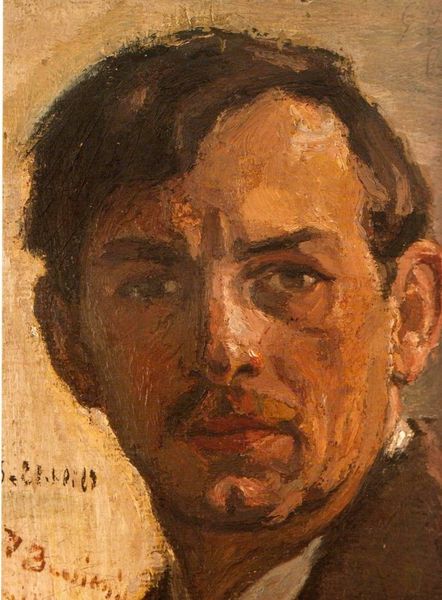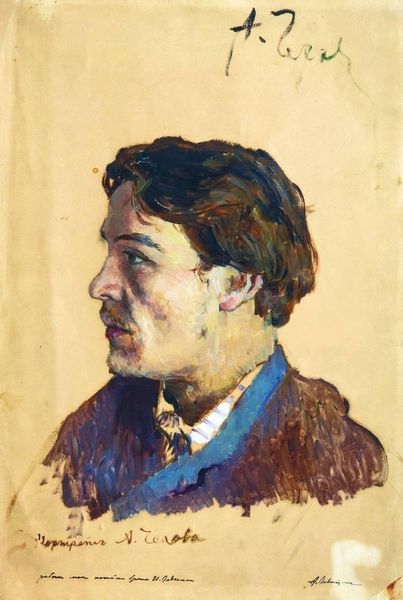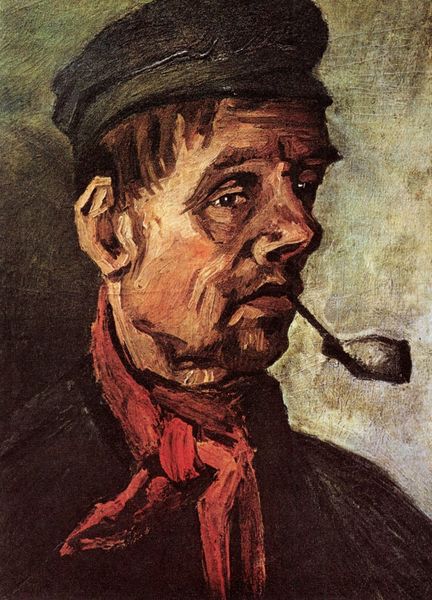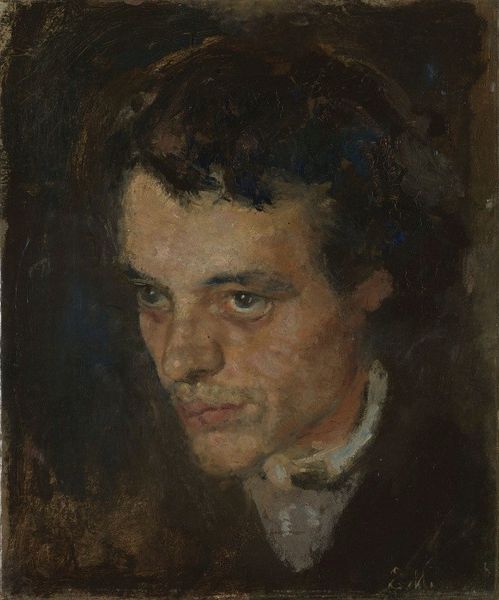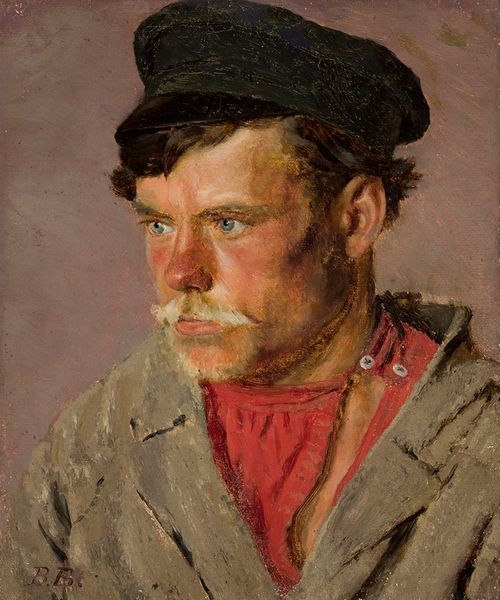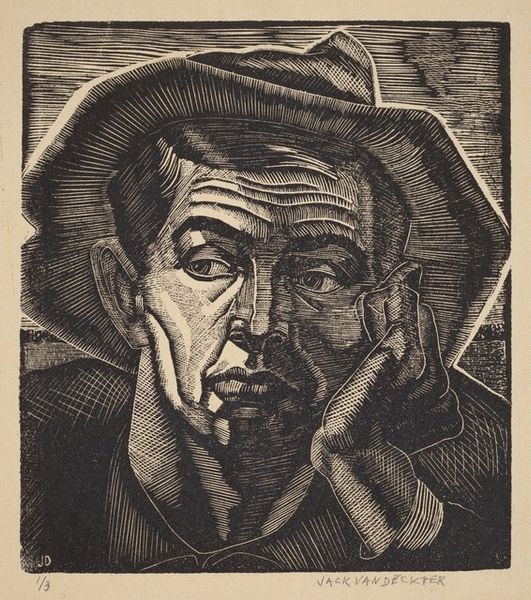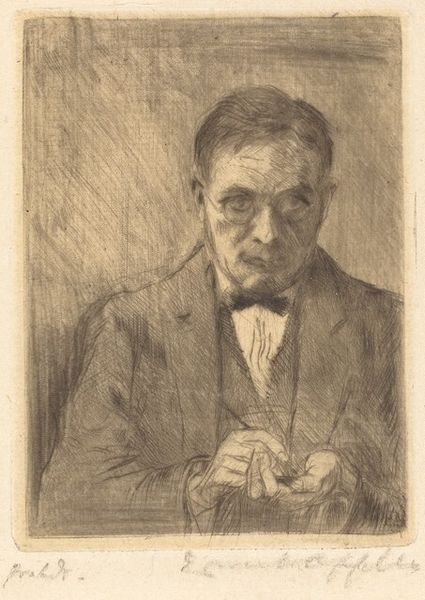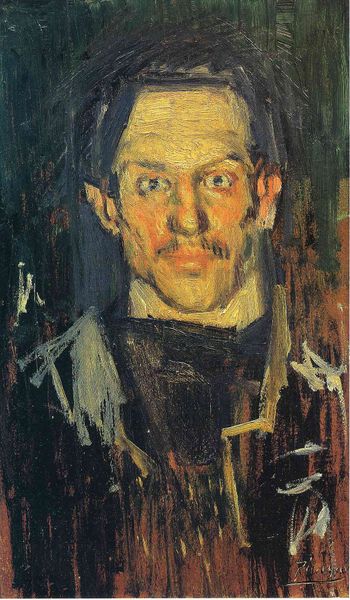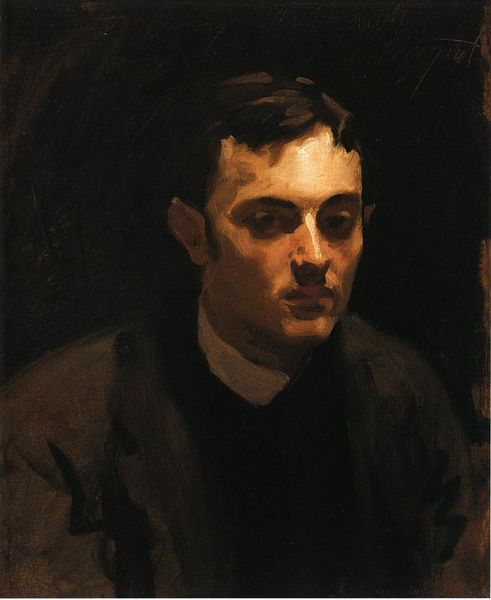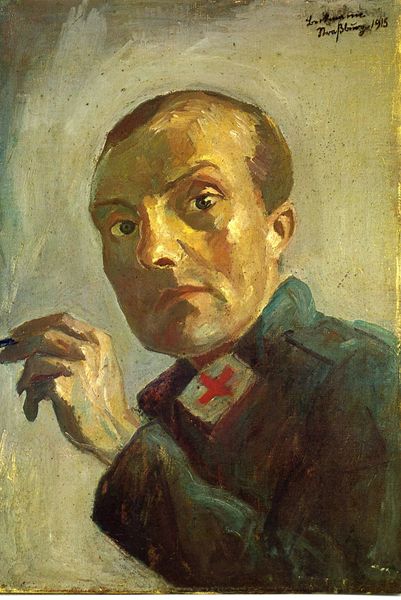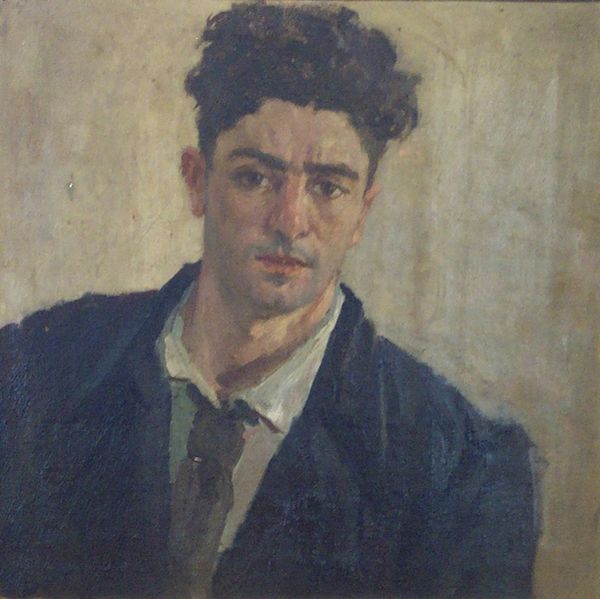
Dimensions: support: 610 x 250 x 16 mm
Copyright: © The estate of Clive Branson | CC-BY-NC-ND 4.0 DEED, Photo: Tate
Editor: Here we have Clive Branson's "Portrait of a Worker," of indeterminate date, held at the Tate. The subject’s direct gaze and the visible brushstrokes give the piece a sense of immediacy. What’s your perspective on this work? Curator: The rough materiality of the paint application speaks volumes. Branson seems less concerned with idealized representation and more interested in conveying the physical reality of labor. Consider the economic conditions impacting both the artist and his subject. How might those shape our understanding? Editor: It highlights the dignity of labor, seeing the worker and not just the work. Curator: Precisely. By focusing on the means of production—both in the painting and in the worker's life—Branson challenges traditional hierarchies within art itself. Editor: I see that now, thanks! Curator: And I appreciate your insights into the subject, bringing it all to life.
Comments
tate 6 months ago
⋮
http://www.tate.org.uk/art/artworks/branson-portrait-of-a-worker-t11787
Join the conversation
Join millions of artists and users on Artera today and experience the ultimate creative platform.
tate 6 months ago
⋮
Portrait of a Worker is a traditional portrait of an unidentified man and is characteristic of Branson’s intentions to represent the working class. The messy hair, unshaven and sunburned face and slightly untidy clothes are all recorded with a close attention to detail. Branson eschews the usual sentimental or unsympathetic representation of such a subject and seeks to show him as a man like any other, equally worthy of consideration. This painting echoes work by artists associated with the Artists International Association (AIA) with whom Branson exhibited in the 1930s. The AIA was founded in 1933, its initial objective being to mobilise ‘the international unity of artists against Imperialist War on the Soviet Union, Fascism and Colonial oppression’ (Morris and Radford, p.2). As the number of members increased (by 1936 over 600 artists had joined the AIA), their aim was broadened to a popular front against both Fascism and war which they strove to achieve through public murals, documentary photographs and travelling exhibitions of paintings and sculptures. Branson’s realistic portrayal of a worker is similar to Unemployed Man circa 1930s by Percy Horton (1897-1980) (private collection) and Young Cockney by George Downs (private collection). Peter Peri’s (1899-1967) concrete sculptures of industrial workers, for example Building Job 1937 (Tate T05035), also reveal similar concerns.
